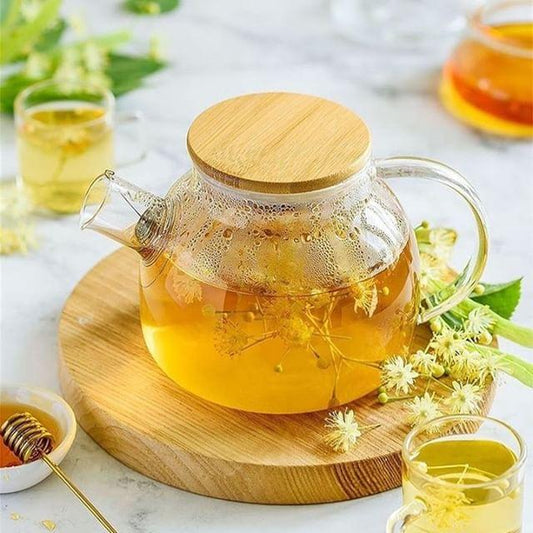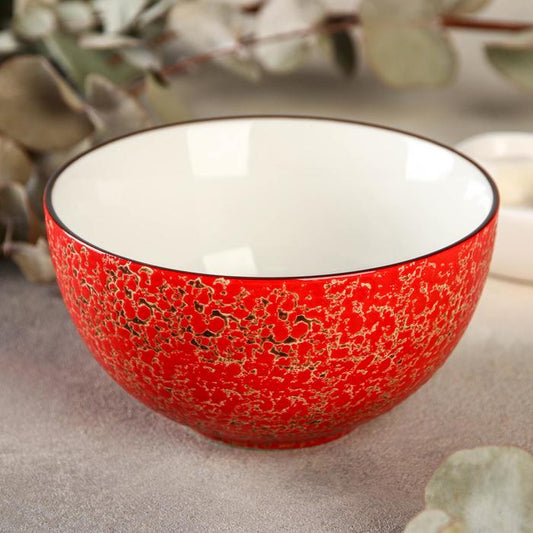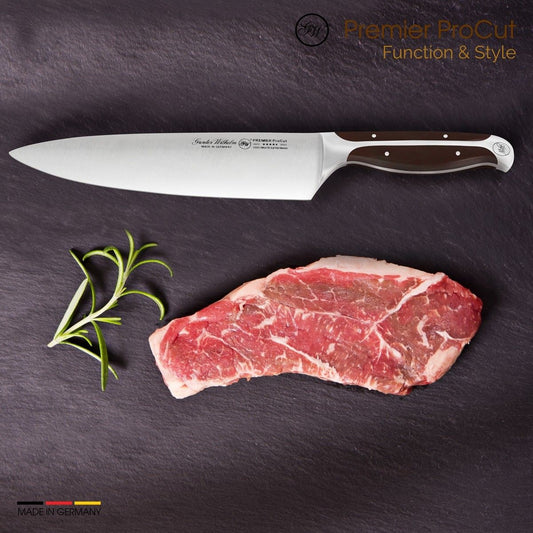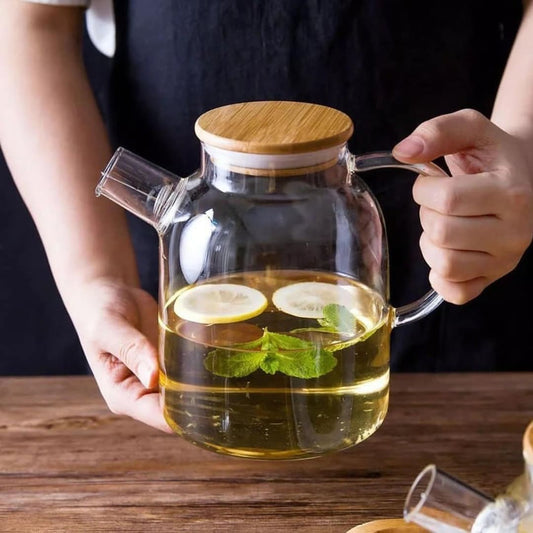This week, we’re taking a look at stainless steel cookware. Stainless is supposed to be one of the best and safest forms of cookware, but as I’ve said before, quality matters. So how do you know if one type of stainless steel is better than another? Is there a way to test stainless steel for quality?
Let’s find out!
Question of the Week
Martha asks:
I was reading your article about cookware.. Last year I bought a set of stainless steel pans. How do I know if they are good quality?… and according to the information they are top quality. I try with a magnet and it will stick all over the pan just not inside… How can I make sure they are safe to cook? I’m totally changing my non-stick for more stainless or cast iron. Thank you for all your info. I cook a lot with butter… I love it!
This is a topic that a lot of people seem to be unsure about—I know I definitely was for quite a while! You hear so many different things about stainless steel. Some say it’s totally safe and non-reactive. Some say it leaches dangerous heavy metals into your food. Some say it’s the best thing ever and the only cookware you should use. Some say it’s only safe if it’s magnetic steel, which it sounds like you’ve heard before. You might have even heard it from me—that’s what I thought was the best way to test for quality, too! I’ve since learned some more information that might help you out.
So, let’s start with that whole magnetic thing. This is a confusing topic!
What’s the deal with magnetic stainless steel?
The theory of the “magnet test,” is sort of this rumor going around in which you’re supposed to test the quality of the stainless steel with a magnet. But really what this tests for, is whether or not the steel is austenitic, or made of a metal alloy which contains chromium and nickel.
There are three main types of structures in stainless steel—austenite, ferrite, and martensite. When you see stainless steel labeled as 18/8 or 18/10 this is telling you how much chromium and nickel is in the steel. The first number indicates 18% chromium, and the second 8% or 10% nickel. The nickel is the key to forming austenite stainless steel. Both the 18/8 and 18/10 are therefore austenitic.
So the “magnet test” is to take a magnet to your stainless steel cookware, and if it sticks, it’s “safe”—indicating no nickel present—but if it doesn’t stick, then it’s not safe, and contains nickel (which is an austenite steel). It is true that if a magnet were to stick to the steel, that it would not be a nickel (austenite) alloy.
There’s a problem with this theory, however. For one thing, there are no stainless steel pans which are magnetic on both the outside AND the inside. Someone please correct me if I’m wrong, but I have searched and searched and searched, and have yet to come across a fully-magnetic piece of stainless steel cookware.
And there is a good reason for this—austenitic, or nickel-containing, non-magnetic stainless steel, is highly resistant to corrosion, which is super important if you’re cooking directly on it. If the piece was fully magnetic stainless steel, it would corrode and not last very long without the nickel to stabilize the metal. Even though it would be nickel-free, I don’t think I would even want a magnetic, 18/0 stainless steel pan for this reason!
You will find magnetic stainless steel in the layer on the outside of some quality pieces of stainless steel. This is to make it compatible with induction stovetops, which involve the use of a rapidly charging electromagnetic field to heat cookware. High-quality stainless steel, good quality manufacturers use three layers of metal—the austenite layer of steel on the inside, ferrite steel on the outside, and a layer of aluminum sandwiched between the two for optimal heat conductivity (steel alone does not conduct heat evenly). Lesser-quality stainless steel is usually just one layer of austenitic stainless steel.
But there is still a difference in quality between the types of austenitic, or non-magnetic, stainless steel. You’ll sometimes find that austenitic stainless steel is weakly magnetized, and that’s because of the manufacturing process. You can actually form ferrite and martensite by “cold-working” the steel, which does make it more prone to corrosion and leaching.
The formulation of austenite in high-end, quality stainless steel cookware is created with a process which is careful to avoid this. It leads to an austenite alloy which is very stable and resistant to corrosion and leaching of metals. I’m no metallurgist, but in my opinion, a carefully-formed and highly-stable, non-corrosive, nickel-containing stainless steel is safer than a purely magnetic stainless steel which could break down and corrode over time. (And which doesn’t even exist on the market, anyway!)
If you know anyone who has had good quality stainless steel cookware for a number of years, you can tell just by looking at it compared with cheap stainless steel, that it is indeed very resistant to corrosion and holds up well over time.
But, to answer your original question,
How do you know if your stainless is high quality?
Well, unless you’re a metals expert and go inspect the factory where the steel is made to see whether or not their manufacturing process creates a pure austenite without corrosive materials formed, you’re not going to know for sure whether or not the craftsmanship of your stainless is of the highest quality. I think your best bet is to simply buy high-quality stainless steel from the start, from a brand with a reputation for good quality. But, I think I have figured out one way that you can determine if the stainless cookware you already have is potentially reactive.
The Vinegar Test
I read that you can test the quality (or more accurately, the reactivity) of the steel by boiling some water with a tablespoon of baking soda in the pan for a few minutes. If the water has a metallic taste, then the steel is reactive and of lesser-quality.
But from what I’ve learned about stainless steel, my understanding was that it’s the acidic foods you have to worry about, when it comes to any leaching from stainless steel. And baking soda is alkaline. So, I decided to do a little science experiment and try a different test!
Here’s what I did:
I poured a couple tablespoons of plain white vinegar (which is of course, quite acidic) into two spoons — good quality spoon, and another generic stainless steel spoon I had lying around. I also put some of the vinegar into a glass cup as a control.
After a few minutes, I taste-tested the vinegar from each.The good quality spoon`s vinegar tasted exactly like the vinegar in the glass cup. But the vinegar in the cheap, generic stainless pan tasted like metal. Blech. The taste is still in my mouth as I type!
I’m pretty convinced my vinegar test is a decent way to determine the reactivity of your stainless steel. Try it out on yours and see if it passes! But if it doesn’t, I wouldn’t freak out over this. Just be mindful about cooking with very acidic things like tomato-based sauces and stuff, and avoid storing these foods in your stainless steel.
thank you to Emily Benfit at (http://butterbeliever.com/how-to-tell-quality-of-stainless-steel-cookware/)







12 comments
Thanks for the information.
Thanks to the author for sharing such a great post. The article was very well written and provided great info about Stainless Steel?!! It can be really great for people like me who are looking to get such kind of more knowledge about it. You must also check out Dukesmetal.com it has some great insights too.
LOW grade stainless steel is magnetic… it’s the cheapest stainless steel and it WILL stain if exposed only so much to weather or certain foods. It will even develop “rust” spots or haze. Your “stainless” BBQ s most likely magnetic and stains.
18/10 is (correctly) NON-magnetic and IS SAFE (that’s where you got it wrong).
Marine grade stainless steel is NON-magnetic.
… J-D.
Thanks! I tried not to read to much into it. I must say the vinegar test have and old school flavor. My Grandmother believed in vinegar, baking soda, and a stand back. If you’re old enough to what this is. She used them to test food, and pot ware, and get rid of heartburn. She lived until 96 years young, born 1892. She had very few health problems.
Thank you for your info on stainless steel. I had to reread parts of it to glean what I hope is enough understanding to purchase a “stainless steel” product. My stainless pots & pans are gently magnetic. A coffee percolator we purchased had a very strong magnetic attraction on the basket, stem, and basket top….but not the body …inside or out. I had to ask why the manufacturer would use two different kids of ss, since all come in contact with very hot water. As you continue to research ss, will you let me know results? In so far as ss types and it’s impact on health.